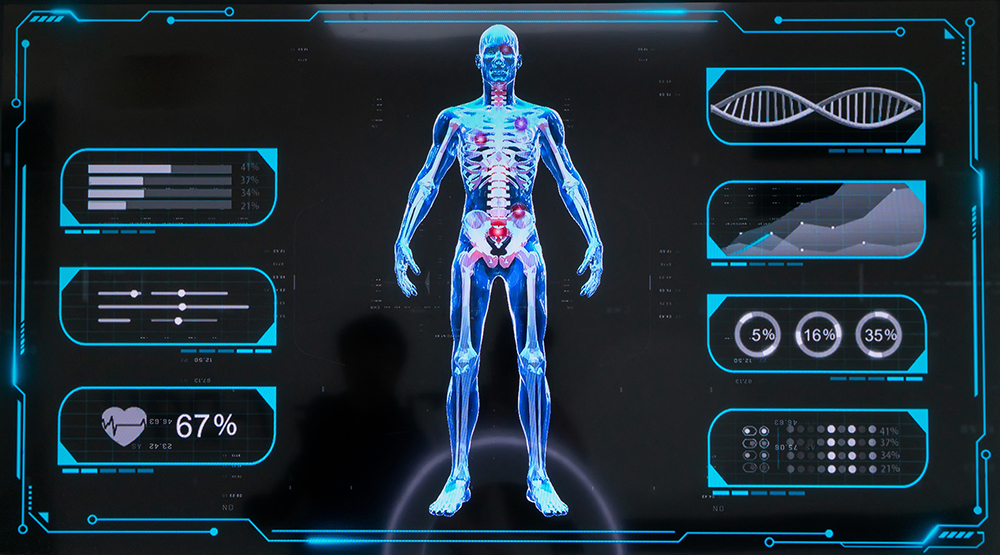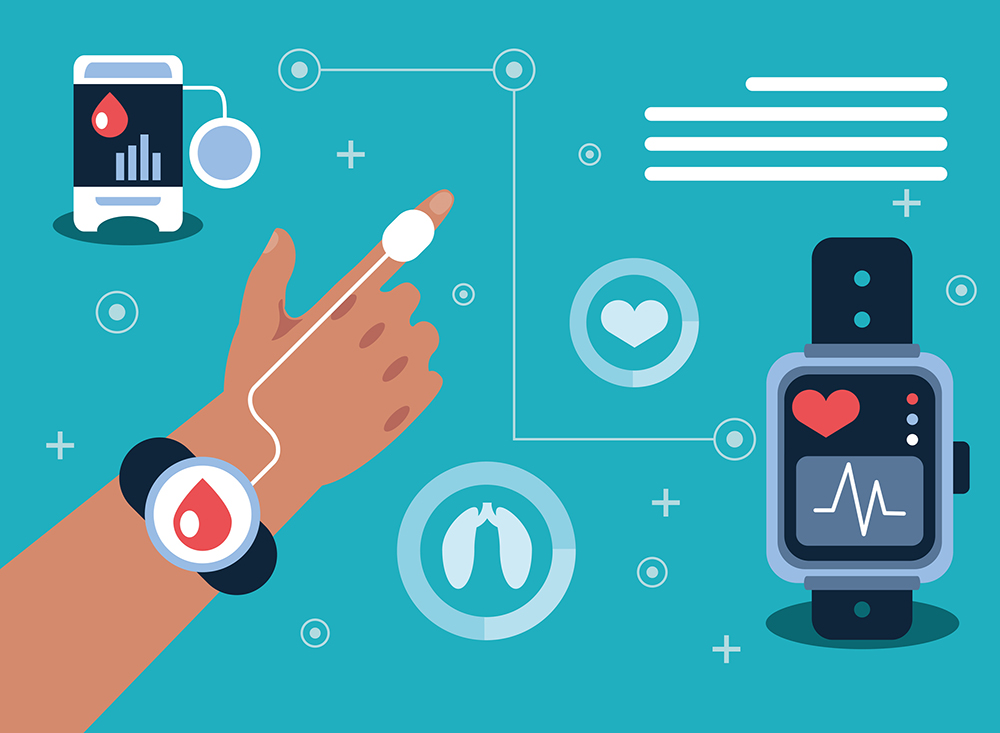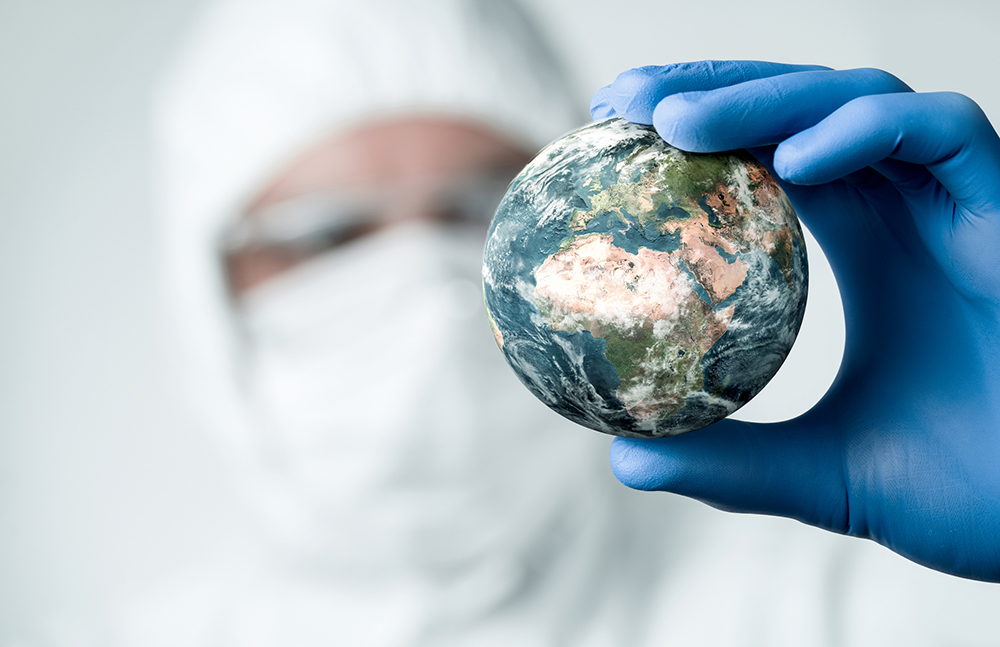Healthcare is one of the most important industries, and developing it helps cure many, even sometimes, rare diseases. Mainly thanks to the technological advances in the medical sector, which enabled a deeper understanding of humanity.
Technology plays a huge role by giving more insights into the human body. However, progress cannot happen without considering other things stopping the way to a better and healthier future. Among others are rising healthcare costs, growing inequities, and climate change.
The presence of technology in medical applications creates new opportunities for patients and medical personnel to live in a more sustainable environment and fight even previously incurable illnesses. Technologies such as Artificial Intelligence (AI), machine learning, virtual care, the Internet of medical things, and 5G are just a few examples that improve medical facilities. How? Read to find out.
1. Artificial Intelligence (AI) in Healthcare
Artificial intelligence is developing across many industries, among others, healthcare. With several applications, such as examining patient information and other data, and the ability to develop new medications and improve diagnostic procedures’ effectiveness, AI is one of the most important healthcare technologies.
Machine learning, which is a type of AI, has a huge impact on the healthcare sector. Recently, this technology is helping, for example, to analyse CT scans in order to treat the effects of coronavirus. But there are several other uses for artificial intelligence that go beyond pandemic treatment. For example, AI improves cancer diagnostics. For decades, the main way to diagnose cancer disease was biopsy, but it did not provide the full picture of the organ tissue. Now digital scans of a particular region that cell mutations may impact are a key component of contemporary histopathology techniques. Pathologists can look at considerably bigger portions of the human body at once using entire slide pictures or WSI (whole-slide imaging).

The promise of artificial intelligence in medicine is to provide composite, panoramic views of individuals’ medical data; to improve decision making; to avoid errors such as misdiagnosis and unnecessary procedures; to help in the ordering and interpretation of appropriate tests; and to recommend treatment.
Eric Topol, Deep Medicine: How Artificial Intelligence Can Make Healthcare Human Again
Another example is Microsoft which created a radiation AI technology called Project InnerEye. The project demonstrates how AI can improve clinicians’ capacity to arrange radiotherapy 13 times more quickly.
2. Integrating Data and Predictive Analysis
Connected with AI and other technologies, data integration and predictive analysis help extract relevant insights about patients’ conditions. Thanks to AI-devices, such as robots that enable integrated data and predictive analysis, medical staff have insights into the patient’s medical record, can generate more accurate diagnosis and decide what treatment will work best for them.
Robots collect the data and predict (sometimes before doctors) what will be required for a patient. However, it creates concern about robots’ presence, for example if they can really replace people in their jobs. Such visions are already common in science fiction movies; for example robot ‘Baymax’, known from Big Hero 6, can measure the intensity of a patient’s pain, inform and act when the patient is in danger and point out what medication is required.
Nevertheless, the reality is not exactly the same as movies. AI might not replace doctors but rather help them receive suggested diagnoses, drugs, and treatment plans based on a patient’s specific medical records, history, and present symptoms. Healthcare staff will be able to use the results of this thorough and thorough analysis of healthcare data to improve patient outcomes, lower costs, and increase staff job satisfaction.
3. Technology in Mental Health
According to the World Health Organisation, mental health issues are increasing worldwide. In the past ten years, there has been a 13% increase in mental health illnesses and substance use disorders, primarily due to demographic shifts (2017). In the present day, 1 in 5 people live with a disability due to mental health issues. The recent impact has been mainly due to the use of social media and the COVID-19 pandemic.
Over the past year, a number of new technologies have developed that can assist in meeting a patient’s continuing mental health demands. As many things went online, a lot of psychologists and psychotherapeutics provide their help via video communicators. There are also digital therapeutics (DTx), and certain applications are becoming able to complete patient intakes and offer an initial diagnosis. Therefore, medical personnel are trying to find solutions to help as many people as possible.

AI in mental health is not only common in apps, but it can also be used to identify diseases with symptoms including a variety of mental symptoms brought on by chemical changes in our brains, for example, dementia. There are many distinct types of dementia, but Alzheimer’s disease is one of the most prevalent types and is characterised by issues with reasoning, memory, and communication. One of the best strategies to treat dementia is early identification.
4. Remote Patient Monitoring & Virtual Care
Internet of Things (IoT) refers to the overall network of interconnected devices as well as the technology that enables inter-device and inter-cloud communication. The medical industry, often referred to as the Internet of Medical Things, includes cutting-edge medical technology like wearable sensors, 5G-enabled devices, and remote patient monitoring. Some of such devices can be purchased from Moxa, have a look here.
One of the IoT developments is a smart pill that gives medical carers and doctors information from inside of the patients’ bodies (called the Internet of Bodies). According to Gartner, smart pills are ingestible sensors that may record various physiological measurements. They can also be used to measure the medication’s effects and verify that a patient has taken it as directed. The first FDA-approved smart pill was released in 2017.
Other features of virtual care include security, location services, teleconferencing, appointment management, secure messaging, healthcare provider evaluations, visit history and wearable connectivity. Furthermore, primary care facilities and clinics can now serve as remote hospitals, for example, conducting basic ultrasound examinations on pregnant women and remote data sharing for virtual cooperation.

5. Digital Therapeutics
Digital therapeutics, mentioned above, are solutions for patients with chronic illnesses who need ongoing care. The care can cover symptom monitoring, medication alterations, and behavioural modifications. Such digital therapeutics can be prescribed to a patient by their doctor, giving them access via computer or app on their smartphone.
Another example of remote care can be serial-based bedside monitoring devices that enable medical personnel to monitor their patients’ condition electronically. Some of such devices are described here.
6. Wearables in Healthcare
Just mentioned within IoT innovation – wearables or wearable technology is a group of electronic devices that can be worn as an accessory, implanted in the user’s body, incorporated in clothing or even tattooed on the skin. But we will not talk about wearables as a gadget but as important innovation in the healthcare industry. For example, smartwatches allow to remotely check on a patient’s condition by providing information about heart rate, blood oxygen saturation and blood vitals. Wearables such as pedometers and various sensors can also measure patient’s physical health.
However, smartwatches are not the only wearables improving the medical diagnosis of a patient’s condition, so are biopatch technology and smart hearing aids. Biopatches can give a better insight into a person’s vitals. Hearing aid noise isolation can also be enhanced with artificial intelligence.
7. Organ Care Technology & Bioprinting
3D printing, covered in the article Learn about Industrial Applications of 3D Printing, is the technology behind bioprinting. 3D printing has its application in the healthcare industry through producing such things as external prostheses, cranial or orthopaedic implants, and personalised airway stents. However, it has also demonstrated value in surgical planning and has been applied to challenging open-heart procedures, even the entire face transplant performed at Cleveland Clinic.
Ohio State University’s Wexner Medical Center is working on a system that they believe would allow living cells, bones, and eventually even organs to be printed within patients’ bodies by robotic surgery equipment. Something that could save the lives of people that fight cancers. This way, we’ve reached something that refers to bioprinting, so 3D printed organs. Although it might sound unreal, the idea has already entered clinical trials. Organs being tested in clinical settings for 3D bioprinting include the ears, corneas, bones, and skin.
8. Cancer Immunotherapy
We already mentioned cancer within this article but did not refer to immunotherapy (also called immuno-oncology), which is a type of cancer treatment, has also advanced and can now prolong a patient’s life considerably. Immunotherapy is based on the idea that cancer can be treated by genetically modifying a patient’s cells, so they cooperate with their immune system. It boosts the immune system’s activity to aid in cancer removal. Immunotherapy does not cause collateral damage to healthy cells as chemotherapy does. It uses the body’s own immune system to identify and eliminate particular cancer cells while slowing the growth of tumours.
9. Augmented & Virtual Reality in Healthcare
There are several uses for augmented and virtual reality (AR and VR) in healthcare. These technologies allow for connecting the digital and physical environments in a multidimensional way. The development of augmented reality is mainly reliant on artificial intelligence. As already mentioned, cancer can be detected through image recognition. VR can be used in physical therapy in areas like mental trauma, where it can cure phobias. Doctors using AR glasses can overlay CAT scans and 3D scan data to view into the bodies of patients. One of the designers of glasses that provide mixed reality experience is Microsoft, which designed HoloLens.
As technology advances and combines augmented and virtual reality, its utilisation may advance beyond straightforward virtual check-ups to a variety of medical treatments carried out remotely, such as full-fledged surgical operations with the help of robotics.
For example, in Japan, there are healthcare robots that care about elderly people. How successful are they? Find out in the document prepared by the Telegraph that points, for instance, Honda’ Hoko Assist’, a replacement for sticks or wheelchairs for disabled people that supports part of the body.
10. Sustainability and decarbonisation
As the world strives toward a more sustainable future, healthcare is also trying to contribute to a better environment, for instance, by providing ecolabelling. Ecolabeling worldwide is a voluntary technique of environmental performance certification and labelling. Within a certain category, an ecolabel highlights goods or services that have been shown to be more environmentally friendly.
Therefore, companies invest in eco-friendly label printer systems for labs, hospitals, clinics, and healthcare. Also, medical professionals benefit from such printers and print expert pressure-sensitive labels that can label account/patient information, medication, medical alerts, cage cards, and more.

The other method that the healthcare industry focuses on is decarbonisation. With the European Union’s increasingly ambitious decarbonization goals there is a necessity to take action across all sectors to track and lessen carbon footprints. One is healthcare that contributes to 5% of total emissions.
Concluding, measuring the social impact and implementing green solutions, like green hospitals, new models of care, improving patients diet and choosing more ecological medical equipment are key to creating a better medical environment. Discover our Top 10 Innovative Technologies in Sustainable Energy Sector.